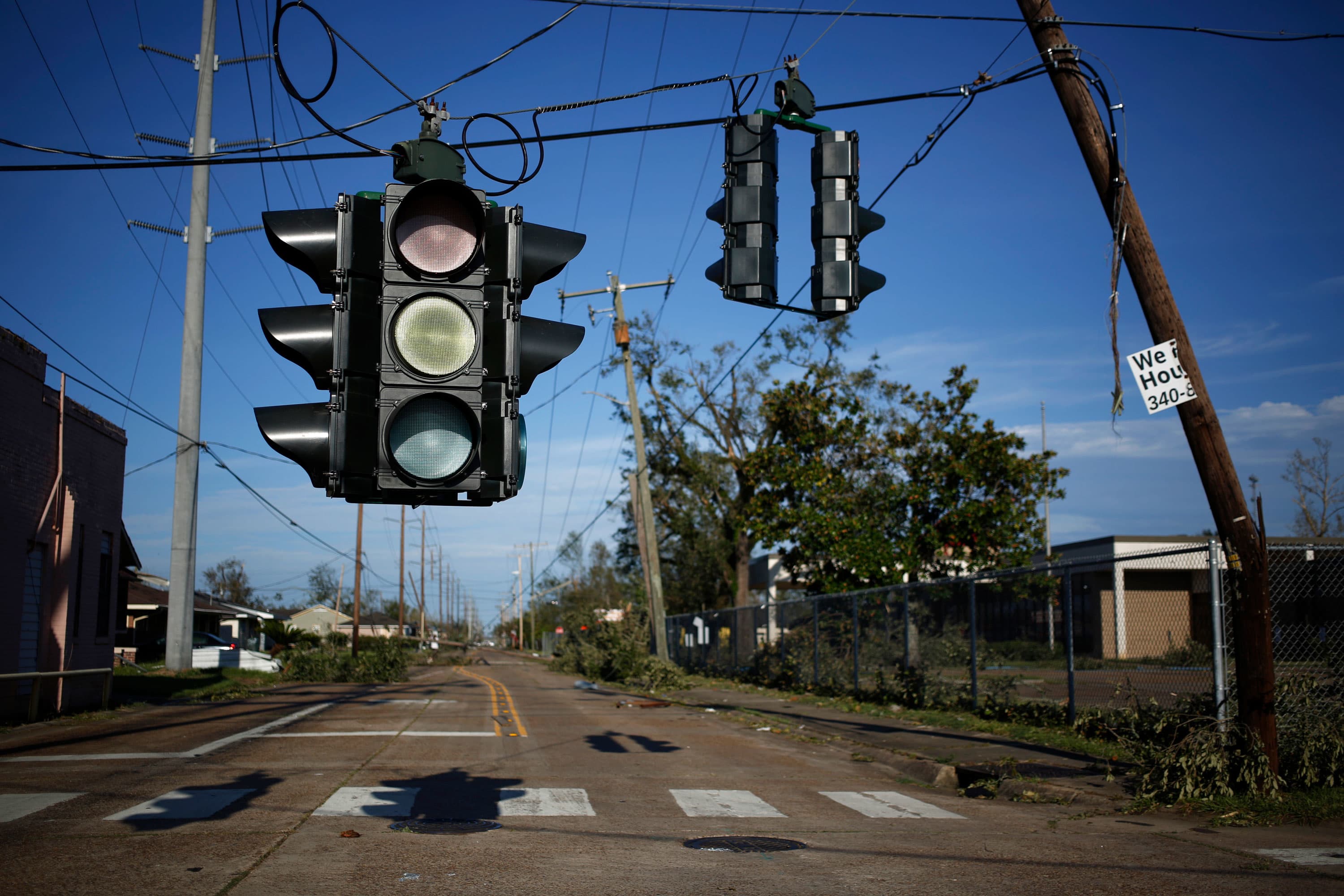While Lousiana appears to have avoided the worst projections for Hurricane Laura, the storm is disrupting the state’s coronavirus response at a particularly crucial time as schools reopen, state officials and epidemiologists said.
Louisiana Gov. John Bel Edwards warned earlier this week that the storm would disrupt the state’s coronavirus response efforts.
“The challenge is we’re basically going to be blind for this week because we’re having to discontinue much of our community-based testing,” he said Wednesday, adding that federally funded “surge testing sites” are also closed. “This comes at a particularly bad time for us because it’s two to three weeks since we resumed K-12 education and since we started moving young people back on to college campuses.”
The storm prompted tens of thousands of people from Southwest Louisiana, which is the part of the state where the highest share of Covid-19 tests are currently coming back positive, to flee across Louisiana, Edwards said. He added that a mass movement of people like that could spread the virus to new communities across the state.
“We will continue to work with our state, tribal and local partners as they plan for execution of evacuation and sheltering operations in a COVID-19 environment,” a spokesperson from the Federal Emergency Management Agency said in a statement to CNBC, adding that “FEMA has not received any requests to surge COVID-19 PPE to states affected by Hurricane Laura.”
The Louisiana Department of Health did not respond to CNBC’s request for comment.
The state is providing temporary shelter to more than 2,100 evacuees, but more than 1,900 of them are being housed in ”non-congregate shelters,” such as hotel and motel rooms, Edwards said. He added that evacuation centers were only used as a last resort. In total, more than 500,000 people in Texas and Louisiana faced evacuation orders due to the storm.
“My biggest concern right now on Covid is that we don’t have the robust testing taking place across the state right now that we need in order to know our positivity is inching up or whether we have more cases,” he said at another news briefing on Thursday. “We really need to get back to our testing just as soon as we possibly can.”
The shuttering of testing centers comes as testing across the state was already falling from its peak in early August. The state was averaging more than 20,000 Covid-19 tests per day at the beginning of the month, according to data from Covid Tracking Project, a volunteer project founded by journalists at The Atlantic magazine. Testing in the state is now down to about 15,000 a day, based on a seven-day average, according to Covid Tracking Project’s data.
Testing is also down nationally, falling from a seven-day average of about 814,000 tests per day at its peak in late July to an average of just under 700,000 tests per day, according to Covid Tracking Project’s data. Some federal officials and epidemiologists have attributed the drop in testing to a few factors, including disruption from natural disasters like Hurricane Isaias in Florida and less demand for testing in the U.S.
Many public health specialists say that widespread testing throughout the population will help detect pockets of outbreaks before they spillover into uncontrolled epidemics.
In Louisiana, cases appear to be down. The state has reported 688 new cases of the virus, on average, over the past seven days, down more than 10% compared with a week ago, according to a CNBC analysis of data compiled by Johns Hopkins University. But Jeffrey Shaman, director of the Climate and Health Program at Columbia University, who co-authored a study earlier this month quantifying the spread of Covid-19 due to hurricane evacuations, said Hurricane Laura will likely “facilitate the spread” of Covid-19.
“The pandemic provides a backdrop, upon which normal evacuation procedures have another issue to contend with,” he said in a phone interview with CNBC. “The more people that you have on the move, the more people who are displaced, the more there’s going to be this disruption and mixing people, some of whom may have the virus. That’s going to some transmission.”
With testing sites down, health officials might not be aware of new outbreaks and additional spread for weeks after infection has seeded itself in a new area, he said.
“It’s a very complicated landscape where the data themselves may be disrupted,” he said, “and the data collection may be disrupted in a way that prevents us from really knowing what the signal is and what actually happened.”
— CNBC’s Emma Newburger contributed to this report.
